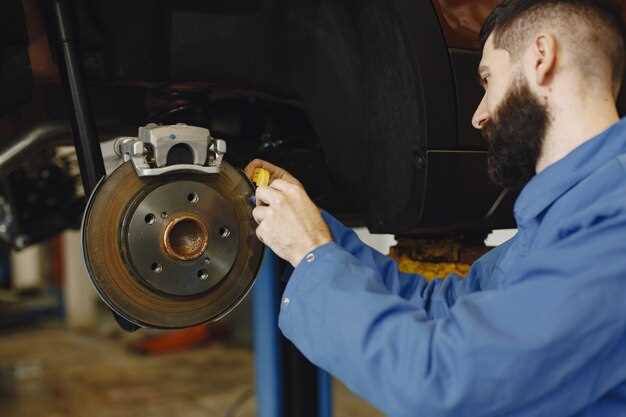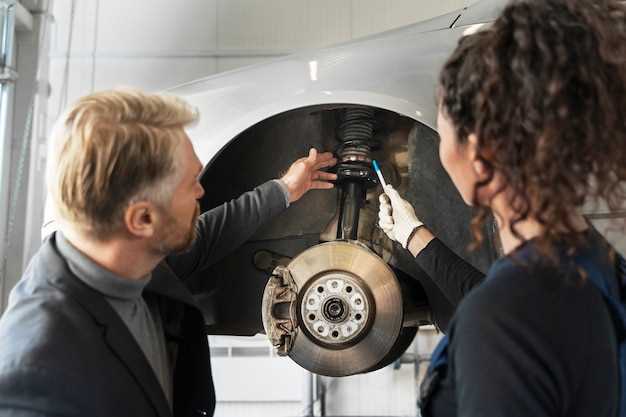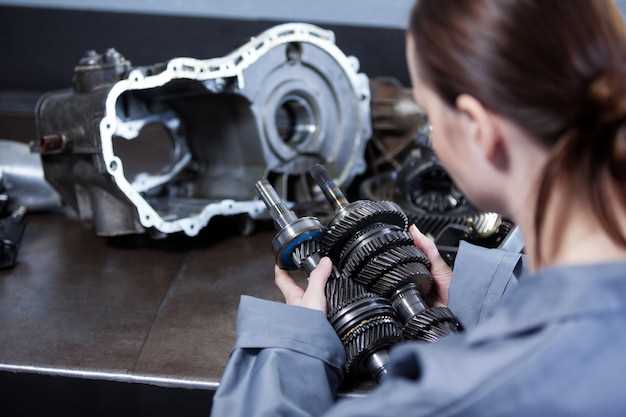
When it comes to maintaining the performance of your Volkswagen Corrado, the clutch system is one of the most critical components to consider. Over time, the clutch kit, including the flywheel, can wear down, leading to difficulties in shifting and decreased overall efficiency. This guide will walk you through the essential steps for a complete replacement of your Corrado’s clutch kit, ensuring your vehicle runs smoothly and responsively.
Understanding the nuances of clutch replacement is vital for any car enthusiast. Not only does it require mechanical skill, but it also demands attention to detail to avoid potential issues down the line. As we delve into this process, you’ll learn about selecting the right clutch kit, the importance of inspecting the flywheel, and crucial tips for installation. Preparing yourself with the right information will significantly enhance your DIY experience and prolong the life of your vehicle.
Whether you’re a seasoned mechanic or a novice looking to expand your automotive knowledge, this comprehensive guide on replacing your Corrado clutch kit is designed for you. With clear instructions and valuable insights, you’ll gain the confidence needed to tackle this essential maintenance task efficiently.
Symptoms Indicating Clutch Replacement for Your Corrado
Identifying the signs that your Corrado’s clutch requires replacement is crucial for maintaining optimal vehicle performance. A worn or failing clutch can lead to serious driving issues, as well as potential damage to other components such as the flywheel.
1. Slipping Clutch: One of the most common symptoms of a failing clutch is slipping. If you notice that the engine revs without a corresponding increase in speed, it indicates that the clutch is no longer engaging properly. This could lead to inefficient power transfer and eventually necessitate replacement.
2. Difficulty Engaging Gears: Struggling to shift gears, especially into reverse or first gear, may signify that the clutch is worn. An inability to engage gears smoothly can also indicate issues with the clutch hydraulic system, which can often accompany the need for a full clutch replacement.
3. Unusual Noises: If you hear grinding or rattling noises when the clutch is pressed, it may suggest internal wear within the clutch assembly or issues with the flywheel. These sounds often indicate that components are not functioning harmoniously, prompting the need for replacement.
4. Vibration or Shuddering: Experiencing vibrations or shuddering when engaging the clutch can indicate a problem with the alignment or condition of the clutch disc and pressure plate. This discomfort not only affects drivability but also serves as a signal that replacement is necessary to prevent further damage.
5. Fluid Leaks: A noticeable leak near the clutch master or slave cylinder could indicate a hydraulic failure. Insufficient hydraulic pressure can impair clutch function, leading to wear. Addressing the leak and replacing the clutch may be essential in resolving the issue.
Overall, being aware of these symptoms will help you determine when it is time for a clutch replacement in your Corrado. Prompt action can spare you from more extensive repairs down the road, including potential damage to the flywheel.
Tools and Materials Needed for Clutch Kit Replacement
When planning to replace the clutch kit in your Corrado, it’s essential to gather all necessary tools and materials beforehand. This ensures that the job runs smoothly and reduces the risk of interruptions during the replacement process.
Below is a comprehensive list of tools and materials you will need:
- Clutch Kit: Ensure you have the correct replacement clutch kit, which typically includes the clutch disc, pressure plate, and release bearing.
- Tools:
- Socket set (with extensions)
- Torque wrench
- Ratchet and various sized sockets
- Screwdrivers (flat and Phillips)
- Wrenches (metric sizes)
- Pry bar (for separating components)
- Engine hoist or jack (for supporting the engine)
- Transmission jack (if available)
- Brake cleaner (for cleaning surfaces)
- Shop towels or rags
- Safety Equipment:
- Gloves (to protect hands)
- Safety glasses (to shield eyes from debris)
- Miscellaneous Supplies:
- New transmission fluid (if required)
- Thread locker (for securing bolts)
- Clutch alignment tool (to properly align the clutch disc)
Having these tools and materials ready will help facilitate the clutch replacement process in your Corrado, ensuring that the procedure is efficient and effective.
Step-by-Step Process for Removing the Old Clutch Kit

Removing the old clutch kit from your Corrado is an essential step in the replacement process. Follow these detailed instructions to ensure a smooth removal.
Step 1: Prepare Your Workspace – Before you begin, make sure you have a clean and well-lit workspace. Gather necessary tools such as a socket set, ratchet, torque wrench, and a clutch alignment tool. Having all items at hand will facilitate the process.
Step 2: Lift the Vehicle – Safely lift the vehicle using a hydraulic jack and secure it with jack stands. Ensure the car is stable before beginning any work underneath.
Step 3: Disconnect the Battery – For safety, disconnect the negative terminal of the battery to prevent any electrical shorts while working.
Step 4: Remove the Transmission – Start by removing the components that obstruct access to the transmission. This may include the exhaust system, drive shafts, and any ancillary parts. Unbolt the transmission mounts and support it with a transmission jack. Carefully slide the transmission out of the way to expose the clutch assembly.
Step 5: Remove the Clutch Pressure Plate – With the transmission out, locate the clutch pressure plate. Remove the bolts securing it to the flywheel. Use a cross-pattern technique to prevent warping. Once all bolts are removed, gently lift the pressure plate from the flywheel.
Step 6: Take Out the Clutch Disc – After the pressure plate has been removed, you can now take out the clutch disc. Note its positioning to ensure correct installation of the new kit later. Inspect the disc for any signs of wear or damage.
Step 7: Check the Flywheel – Finally, inspect the flywheel for any irregularities. Clean it if necessary and check for any surface cracks. If the flywheel shows significant wear, it may need machining or replacement.
By following these steps carefully, you will be able to successfully remove the old clutch kit from your Corrado, preparing you for the installation of the new unit.
Inspecting and Preparing the Flywheel Before Installation
Before installing your new clutch kit, it is crucial to inspect and prepare the flywheel for optimal performance. The flywheel plays a vital role in the clutch mechanism and directly affects the efficiency of power transfer from the engine to the transmission.
Start by examining the flywheel surface for any signs of wear, cracks, or warping. A damaged flywheel can lead to poor clutch engagement and decreased overall performance. Look for deep scores, hot spots, or discoloration, which may indicate excessive heat buildup during previous clutch operations.
If the flywheel shows significant wear or damage, it is advisable to consider a replacement. Continuing to use a compromised flywheel could result in premature failure of the new clutch kit. If the surface appears relatively smooth but has minor imperfections, you might choose to have it resurfaced. Resurfacing can provide a fresh, even surface that enhances the contact between the flywheel and the clutch disc.
After inspecting the surface, check the flywheel’s mounting points. Ensure that the bolt holes are free of debris and are not stripped. Clean the areas where the flywheel contacts the engine and clutch assembly to prevent any contamination that could affect performance.
Finally, consider the flywheel runout. Using a dial indicator, measure the runout to ensure it falls within the manufacturer’s specifications. Excessive runout can result in vibration and uneven wear on the new clutch disc.
By thoroughly inspecting and preparing the flywheel, you can ensure a successful installation of your replacement clutch kit, leading to improved vehicle performance and longevity.
Proper Installation Techniques for the New Clutch Kit

When replacing your Corrado clutch kit, proper installation is crucial for optimal performance and longevity. Start by ensuring that you have all the necessary tools and parts ready, including the new clutch disc, pressure plate, release bearing, and, if needed, a new flywheel.
Before beginning the replacement, inspect the flywheel for any signs of wear or damage. A smooth and flat surface is essential for the new clutch to engage properly. If you notice significant scoring or warping, it may be necessary to either resurface the flywheel or replace it entirely.
Next, make sure that the surface where the new clutch kit will be installed is clean and free of any dirt or debris. This helps create a better seal and enhances the reliability of the installation. Use a soft cloth or an appropriate cleaner to wipe down the flywheel and surrounding area.
When positioning the new clutch disc, align the markings on the disc with the flywheel. Utilize a clutch alignment tool to ensure that the disc is centered correctly. This step is vital as misalignment can lead to difficulty in shifting and premature wear.
After securing the clutch disc in place, install the pressure plate. Tighten the bolts in a crisscross pattern to evenly distribute pressure across the plate. This helps prevent warping and ensures that the clutch engages smoothly. Follow the manufacturer’s specifications for torque settings to achieve the correct tightness.
Finally, install the release bearing and reconnect all associated components. Rechecking connections and ensuring that all parts are operating freely will help prevent issues once the vehicle is back together.
In summary, proper inspection and preparation, along with careful alignment and tightening, are key to a successful clutch kit replacement. This attention to detail will enhance the performance of your Corrado and extend the lifespan of the new components.
Testing and Adjusting Your Clutch Post-Replacement
After completing the replacement of your Corrado clutch kit, it’s essential to ensure the proper functionality of the clutch system. This involves testing and adjusting various components, including the flywheel, to achieve optimal performance.
Begin by checking the clutch pedal free play. This adjustment is crucial for ensuring that the clutch engages and disengages smoothly. Aim for a pedal free play of approximately 1-2 inches. You can adjust the free play by modifying the pushrod length or adjusting the clutch master cylinder.
Next, proceed to inspect the flywheel for any signs of uneven wear or damage. A damaged flywheel can lead to clutch slipping and reduced efficiency. If your flywheel was resurfaced during the replacement, ensure that it properly matches the new clutch disc specifications.
Once you’ve verified the components, perform a series of tests:
| Test | Procedure | Expected Result |
|---|---|---|
| Clutch Engagement | Start the engine, press the clutch pedal, and shift into gear. | Gear engages smoothly without grinding. |
| Clutch Disengagement | With the engine running, press the clutch and attempt to shift into neutral. | Shifts into neutral with no resistance. |
| Pedal Feel | Drive the vehicle and assess pedal feedback during clutch engagement. | Pedal feels firm and responds correctly. |
If you experience any irregularities during testing, revisit your adjustments and ensure all connections are secure. Regular maintenance of the parts involved in the clutch system can prolong their lifespan and enhance performance. Properly adjusting and testing your clutch post-replacement is vital for a smooth driving experience.










